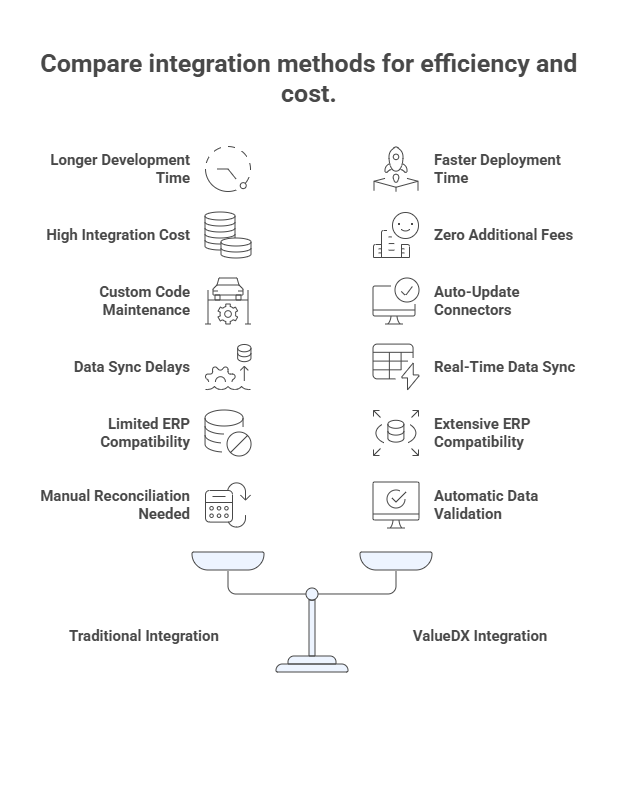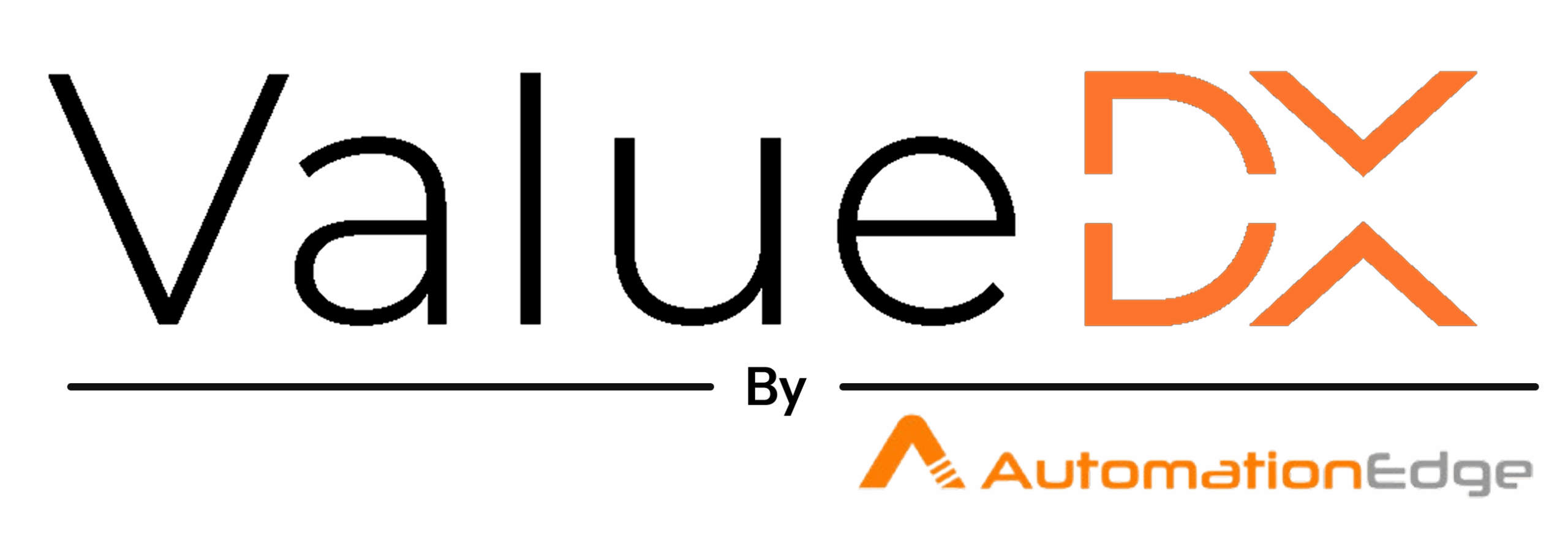
I’ll never forget the look on Rajesh’s face when I walked into his IT office in Mumbai. As the CTO of a rapidly growing pharma company, he’d just spent six months trying to integrate their new Accounts Payable automation tool with their existing SAP system. “It’s a nightmare,” he said, pointing to a whiteboard covered in API diagrams and error codes. “We’re three months behind schedule, ₹40 lakhs over budget, and my team is working weekends just to get basic data flowing.”
Here’s the thing – I’ve seen this story play out dozens of times across Pune, Bangalore, and Delhi. Companies invest in great Accounts Payable automation technology, only to discover that integration complexity can turn their digital transformation dream into an expensive headache. But what if I told you it doesn’t have to be this way?
The Integration Reality: Why Most AP Solutions Fall Short
Let’s be honest – most AP automation vendors talk a big game about integration, but when it comes to actual implementation, they hand you a pile of technical documentation and say “good luck.” I’ve watched IT teams spend months writing custom APIs, only to discover that their solution breaks every time the ERP system gets updated.
The numbers are staggering. Companies typically spend 40-60% of their AP automation budget on integration costs, 3-8 months on integration development and testing, ₹15-25 lakhs on additional IT resources for integration projects, and ongoing maintenance costs of ₹5-8 lakhs annually. What’s crazy is that all this complexity often results in systems that barely talk to each other, creating data silos instead of eliminating them.
I watched one company in Bangalore spend ₹60 lakhs on what they thought would be a simple integration project. Eight months later, they had a system that required three full-time developers just to keep it running. Every ERP update meant weeks of testing and potential downtime. The CFO told me, “We thought we were buying AP automation, but we actually bought a full-time IT project.”
The Traditional Integration Nightmare
I’ve seen this scenario play out so many times. A company decides to modernize their AP processes, and the integration journey begins with optimism but quickly turns into a technical quagmire. Month one, the IT team reviews integration requirements and realizes they need custom development. Month two, developers start building APIs while discovering undocumented ERP limitations. Month three brings the first integration attempt that fails due to data format incompatibilities. Month four means going back to the drawing board with additional middleware requirements. Month five delivers partial integration that requires manual data reconciliation. Month six brings “go-live” with fingers crossed and a backup plan.
One client in Delhi told me, “By the time we got our AP system talking to our ERP, we’d spent more on integration than on the actual software license. And it still didn’t work properly.” This isn’t just about money – it’s about trust. When integration projects fail, IT teams lose credibility with business leaders, and future digital transformation initiatives face increased skepticism.
The ValueDX Integration Philosophy: Built for Connectivity
Here’s where ValueDX completely changes the game. When I introduced Rajesh to our integration approach, his first question was, “Where’s the catch?” There wasn’t one. ValueDX was built from the ground up with integration as a core feature, not an afterthought.
What really impressed Rajesh was that ValueDX comes with pre-built connectors for virtually every ERP (SAP, Tally, Oracle, Microsoft Dynamics, etc) and accounting system his company might ever use. No custom development, no months of testing, no expensive middleware – just plug-and-play connectivity. The system doesn’t just connect to your ERP – it creates a living, breathing data bridge. Invoice data flows seamlessly, approval workflows sync automatically, and payment information updates in real-time across all systems.
| Traditional Integration | ValueDX Integration |
|---|---|
| 3-8 months development time | 2-5 days deployment |
| High lakhs integration cost | Zero additional integration fees |
| Custom code maintenance required | Pre-built connectors auto-update |
| Data sync delays and errors | Real-time bidirectional sync |
| Limited ERP compatibility | 200+ ERP/accounting systems |
| Manual reconciliation needed | Automatic data validation |

The Comprehensive Compatibility Advantage
What sets ValueDX apart is our extensive compatibility with both international and Indian ERP systems. We understand that businesses in India often run hybrid environments – maybe SAP for finance, Tally for local compliance, and Oracle for operations. Our platform seamlessly integrates with international ERPs like SAP (all modules including S/4HANA), Oracle (EBS, Cloud, NetSuite), Microsoft Dynamics (365, NAV, GP), Workday, Sage, and Epicor.
But here’s what really matters for Indian businesses – we also connect flawlessly with local solutions like Tally (all versions including Prime), Ramco, Focus, Busy, Marg, Vyapar, and Zoho Books. Whether you’re running cloud-based systems like QuickBooks Online, Xero, or industry-specific solutions, ValueDX creates seamless connectivity across your entire technology stack.
Real-World Integration Success Stories
Let me share what happened with Rajesh’s company after we implemented ValueDX. Day one, the ValueDX team connected to their SAP system using pre-built connectors. Day two, historical invoice data migrated automatically with zero downtime. Day three, live testing confirmed real-time data flow between systems. Day four brought team training and process optimization. Day five delivered full production deployment with seamless ERP integration.
“I couldn’t believe it,” Rajesh told me three months later. “We went from six months of integration hell to five days of smooth deployment. My team actually thanked me for choosing ValueDX.”
Another client in Pune runs a complex setup – SAP for manufacturing, Tally for GST compliance, and a custom-built CRM system. Traditional integration would have required months of custom development and ongoing maintenance. With ValueDX, all three systems now work together seamlessly, sharing data in real-time without any custom coding.
Here’s what really got their attention: when they updated their GST rates in Tally, the changes automatically propagated to SAP and reflected in all AP processing within minutes. No manual updates, no data inconsistencies, no reconciliation headaches.
The Single Source of Truth Advantage
Here’s what really gets me excited about ValueDX integration capabilities – it doesn’t just connect your systems, it creates a unified financial ecosystem. Every invoice, every approval, every payment exists simultaneously across all your platforms without duplication or data conflicts.
For IT decision-makers, this means zero custom development required, no ongoing maintenance overhead, automatic updates and security patches, and a 99.9% uptime guarantee with failover protection. For CFOs, it delivers real-time financial visibility across all systems, elimination data reconciliation tasks, reduces IT infrastructure costs, and speeds up month-end closing processes. Controllers benefit from automated data validation and error detection, seamless audit trails across all platforms, elimination of manual data entry, and consistent reporting across systems.
The Integration Economics That Make Sense
Let’s talk numbers. A typical ValueDX integration delivers 70% reduction in integration development costs, 60% decrease in ongoing IT maintenance, 50% faster deployment timelines, and 80% reduction in data reconciliation effort.
One Mumbai-based company reported their previous integration budget was ₹45 lakhs, ValueDX integration cost was significantly (included in subscription), they saved 5 months of development work, and achieved ongoing maintenance savings of ₹8 lakhs annually. The controller told me, “We were prepared to spend a fortune on integration. Instead, we got better connectivity than we ever imagined at no additional cost.”
The No-Disruption Promise
What really sets ValueDX apart is our commitment to zero-disruption integration. Your existing ERP processes continue running normally while ValueDX seamlessly integrates in the background. No system downtime, no data loss, no business interruption.
I’ve seen companies postpone digital transformation for years because they’re afraid of disrupting their operations. With ValueDX, that fear becomes irrelevant. The platform automatically validates data consistency across systems, flags potential conflicts before they impact operations, optimizes data flow for maximum performance, and provides detailed integration analytics and monitoring.
Beyond Basic Integration: The Intelligent Connection
ValueDX doesn’t just move data between systems – it adds intelligence to the process. The platform creates smart connections that learn from your business patterns and optimize performance automatically. When GST rates change, the system updates across all connected platforms simultaneously. When approval workflows are modified, the changes propagate seamlessly to every integrated system.
The Bottom Line: Integration That Just Works
Here’s what Rajesh told me six months after implementation: “ValueDX didn’t just integrate with our systems – it made them work better together. Our financial processes are now completely automated, our data is always accurate, and my IT team can focus on innovation instead of maintenance.”
That’s the ValueDX integration advantage – transforming complex technical challenges into simple business solutions. With our outcome-based pricing model, you get enterprise-grade integration capabilities without the enterprise-grade complexity or cost. The question isn’t whether you can afford to implement proper ERP integration. The question is whether you can afford to keep running disconnected systems in today’s competitive market.
Send your sample invoice to info@ValueDX.com — we’ll get back to you with the extracted data.
Read our next blog – Click here

